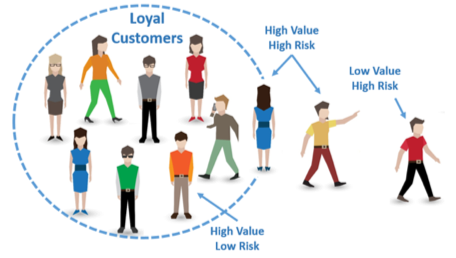https://github.com/sayamalt/customer-churn-prediction
Successfully established a machine learning model which can predict whether any given customer currently utilizing the products and services offered by a company will churn at anytime in the future or not, depending upon a set of unique features/characteristics pertaining to that specific individual, to a great level of accuracy.
https://github.com/sayamalt/customer-churn-prediction
classification data-visualization exploratory-data-analysis feature-engineering hyperparameter-tuning model-deployment model-evaluation model-optimization model-training supervised-machine-learning
Last synced: 8 months ago
JSON representation
Successfully established a machine learning model which can predict whether any given customer currently utilizing the products and services offered by a company will churn at anytime in the future or not, depending upon a set of unique features/characteristics pertaining to that specific individual, to a great level of accuracy.
- Host: GitHub
- URL: https://github.com/sayamalt/customer-churn-prediction
- Owner: SayamAlt
- Created: 2022-06-18T18:49:04.000Z (over 3 years ago)
- Default Branch: main
- Last Pushed: 2022-06-18T20:07:30.000Z (over 3 years ago)
- Last Synced: 2024-12-28T08:09:58.307Z (10 months ago)
- Topics: classification, data-visualization, exploratory-data-analysis, feature-engineering, hyperparameter-tuning, model-deployment, model-evaluation, model-optimization, model-training, supervised-machine-learning
- Language: Jupyter Notebook
- Homepage:
- Size: 5.08 MB
- Stars: 0
- Watchers: 1
- Forks: 0
- Open Issues: 0
-
Metadata Files:
- Readme: README.md
Awesome Lists containing this project
README
# Customer-Churn-Prediction
## What is Customer Churn? Why is it necessary to detect it well in advance?
Customer churn is defined as when customers or subscribers discontinue doing business with a firm or service. Customer churn, also known as customer attrition, is critical metric because retaining existing customers is much less exorbitant than acquiring new customers – earning business from new customers requires working leads all the way through the sales funnel, leveraging your marketing and sales resources throughout the process. Customer retention, on the other hand, is usually more cost-effective because you've already gained your consumers' confidence and loyalty.
Since customer attrition stifles growth, businesses should have a mechanism for estimating client churn over time. Organizations may assess their client retention success rates and identify strategies for improvement by being aware of and tracking churn rate. The overall number of customers lost, the percentage of customers lost compared to the company's entire customer count, the value of recurring business lost, or the percent of recurring value lost are all ways that different businesses assess customer churn rate. Other companies assess churn rate over a certain time period, such as quarters or fiscal years.
One of the most prominent methods for calculating customer churn is to divide the total number of customers a firm has at the start of a certain time period by the number of customers lost during that same time period.
## Deployed Web Application
Link: https://customer-churn-prediction-sam.herokuapp.com/



## Context
Churn rate is a marketing metric that describes the number of customers who leave a business over a specific time period. Every user is assigned a prediction value that estimates their state of churn at any given time. This value is based on:
- User demographic information
- Browsing behavior
- Historical purchase data among other information
It factors in our unique and proprietary predictions of how long a user will remain a customer. This score is updated every day for all users who have a minimum of one conversion. The values assigned are between 1 and 5.
## Content
Feature
Description
customer_id
Represents the unique identification number of a customer.
Name
Represents the name of a customer.
age
Represents the age of a customer.
security_no
Represents a unique security number that is used to identify a person.
region_category
Represents the region that a customer belongs to.
membership_category
Represents the category of the membership that a customer is using.
joining_date
Represents the date when a customer became a member.
joined_through_referral
Represents whether a customer joined using any referral code or ID.
.
referral_id
Represents a referral ID.
preferred_offer_types
Represents the type of offer that a customer prefers.
medium_of_operation
Represents the medium of operation that a customer uses for transactions.
internet_option
Represents the type of internet service that a customer uses.
last_visit_time
Represents the last time a customer visited the website.
days_since_last_login
Represents the no. of days since a customer last logged into the website.
avg_time_spent
Represents the average time spent by a customer on the website.
avg_transaction_value
Represents the average transaction value of a customer.
avg_frequency_login_days
Represents the no. of times a customer has logged in to the website.
points_in_wallet
Represents the points awarded to a customer on each transaction.
used_special_discount
Represents whether a customer uses special discounts offered.
offer_application_preference
Represents whether a customer prefers offers.
past_complaint
Represents whether a customer has raised any complaints earlier.
complaint_status
Represents whether the complaints(if any) raised by a customer were resolved or not.
feedback
Represents the feedback provided by a customer.
churn_risk_score
Represents the churn risk score that is either 0 or 1.